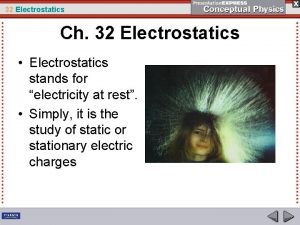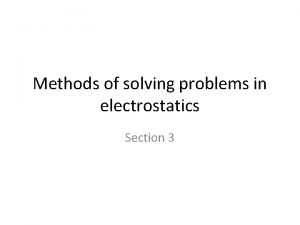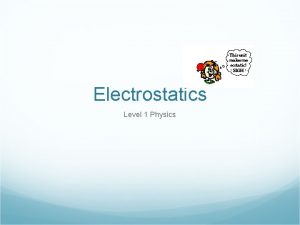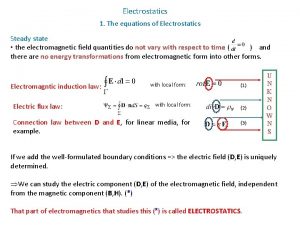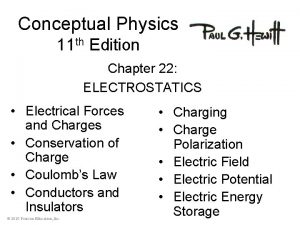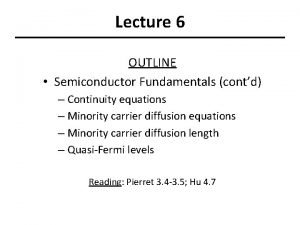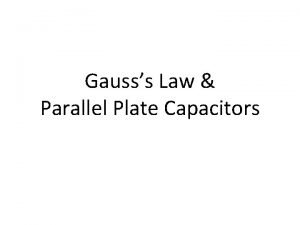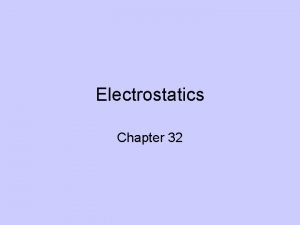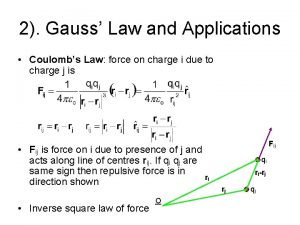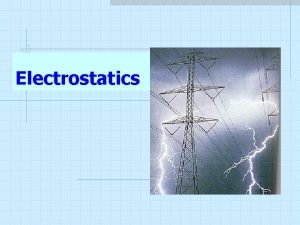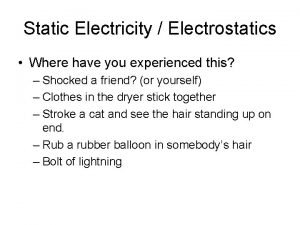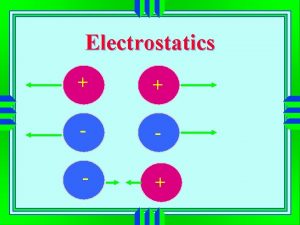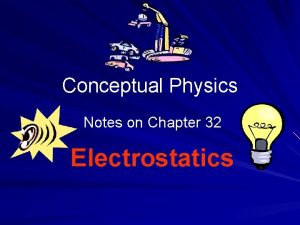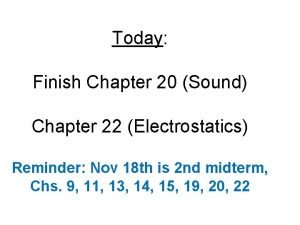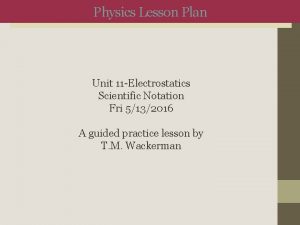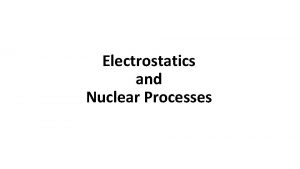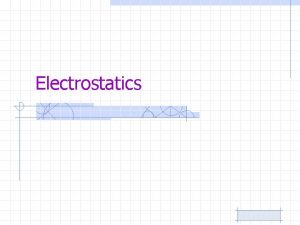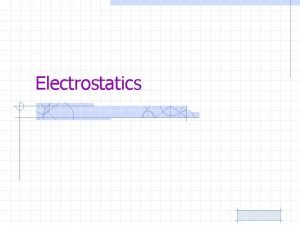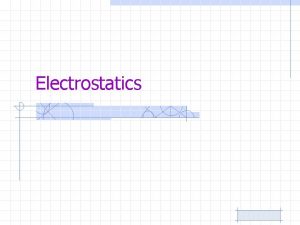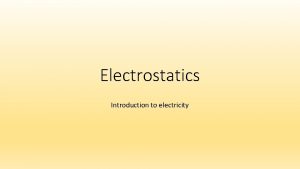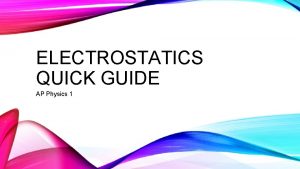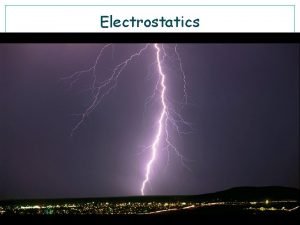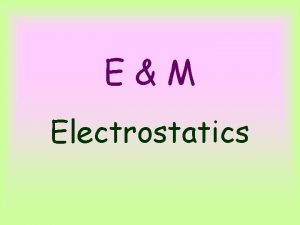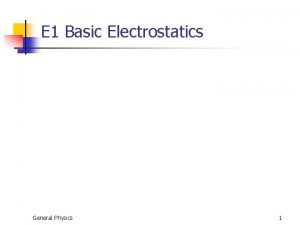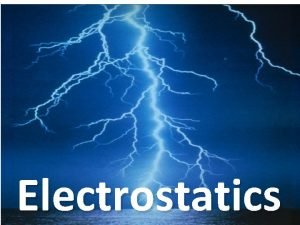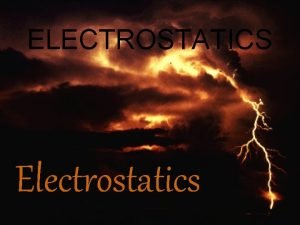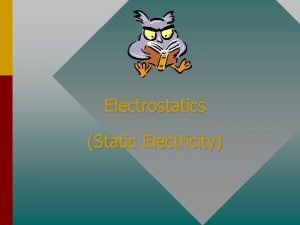Conductors 1 Electrostatics with conductors a Students should



















- Slides: 19

Conductors









1. Electrostatics with conductors a) Students should understand the nature of electric fields in and around conductors, so they can: (1) Explain the mechanics responsible for the absence of electric field inside a conductor, and know that all excess charge must reside on the surface of the conductor. (2) Explain why a conductor must be an equipotential, and apply this principle in analyzing what happens when conductors are connected by wires. (3) Show that all excess charge on a conductor must reside on its surface and that the field outside the conductor must be perpendicular to the surface. b) Students should be able to describe and sketch a graph of the electric field and potential inside and outside a charged conducting sphere. c) Students should understand induced charge and electrostatic shielding, so they can: (1) Describe the process of charging by induction. (2) Explain why a neutral conductor is attracted to a charged object.

Capacitors








2. Capacitors a) Students should understand the definition and function of capacitance, so they can: (1) Relate stored charge and voltage for a capacitor. (2) Relate voltage, charge and stored energy for a capacitor. (3) Recognize situations in which energy stored in a capacitor is converted to other forms. b) Students should understand the physics of the parallel-plate capacitor, so they can: (1) Describe the electric field inside the capacitor, and relate the strength of this field to the potential difference between the plates and the plate separation. (4) Determine how changes in dimension will affect the value of the capacitance.
 Electrostatics
Electrostatics Method of inversion electrostatics
Method of inversion electrostatics Electrostatics conceptual questions
Electrostatics conceptual questions Electrostatics
Electrostatics Conceptual physics chapter 22 electrostatics
Conceptual physics chapter 22 electrostatics Equation of continuity in semiconductors
Equation of continuity in semiconductors Electrostatics
Electrostatics This is electricity at rest
This is electricity at rest Type of charging processes
Type of charging processes Coulomb law differential form
Coulomb law differential form What is electrostatics
What is electrostatics Electric energy
Electric energy Electrostatics
Electrostatics Facts about electrostatics
Facts about electrostatics Chapter 32 conceptual physics
Chapter 32 conceptual physics Chapter 22 electrostatics
Chapter 22 electrostatics Electrostatics sticky tape lab answers
Electrostatics sticky tape lab answers Electrostatics lesson plan
Electrostatics lesson plan Electrostatics formula
Electrostatics formula Electrostatics physics classroom
Electrostatics physics classroom
